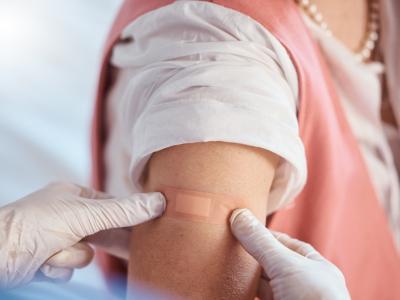Illinois reports 10 more Elizabethkingia cases; tests find different strain
A little over a week after reporting the first Elizabethkingia anopheles infection in the state, Illinois health officials yesterday reported 10 more, including 6 deaths, but tests show that the strain is different than the one implicated in Wisconsin's outbreak.
In a statement yesterday, the Illinois Department of Public Health (IDPH) said Illinois hospitals and labs have responded to its request to report all cases going back to January 2014 and save samples for testing. The agency added that it has been sending the specimens to the Centers for Disease Control and Prevention (CDC) for testing.
The state's first case, announced Apr 12, matched the Wisconsin outbreak strain, but CDC testing found a different strain in the 10 recent samples, the IDPH said.
Nirav Shah, MD, JD, IDPH director, said even though the strain is different, officials will use the same methods to investigate the cluster and develop ways to prevent more infections.
Most of the Illinois Elizabethkingia cases have been bloodstream infections involving patients who are older than age 65. Though 6 of the 10 latest patients died, the IDPH said it isn't clear if the bacteria is the cause, because many had underlying health conditions.
E anopheles can be found in soil and other environmental sources and is known to cause opportunistic infections. So far the source of the outbreak isn't known. It is usually antibiotic resistant, but the Wisconsin strain is susceptible to a handful of drugs. So far there's no word on the resistance pattern of the strain linked to the 10 new Illinois cases.
Wisconsin has 59 cases, including 18 deaths, and Michigan has 1 fatal case, according to totals from the CDC.
Apr 20 IDPH statement
Apr 12 CIDRAP News scan "Illinois becomes third state to report Elizabethkingia infection"
CDC Elizabethkingia outbreak page
Chinese man hospitalized with H5N6 infection
China has detected another case of H5N6 avian flu, in a 35-year-old man from Hubei province who is hospitalized in critical condition, according to a statement today from Hong Kong's Centre for Health Protection (CHP). The man's H5N6 infection is China's eighth case since the end of December.
The man started having symptoms on Apr 9 and was hospitalized 3 days later. The CHP report, which cited mainland health officials, didn't say how the man might have been exposed to the virus.
H5N6 outbreaks in poultry have been reported in a few Asian countries, but so far China is the only one to report human cases. The novel virus was first identified in 2014, and since then China has reported 11 cases. The most recent previous one was announced on Mar 15.
The new case is the first in Hubei province, lifting the number of affected provinces to four. Most have been in Guangdong.
Apr 21 CHP statement
Last Ebola patient in Guinea recovers; WHO assesses training outcomes
The last Ebola patient in Guinea has been discharged from a treatment facility, and there are no remaining suspected infections, Agence France-Presse (AFP) reported yesterday. In related news, the World Health Organization (WHO) yesterday released an Apr 8 evaluation of its training efforts for clinicians working in Ebola treatment units.
Ten Ebola cases were confirmed after the disease reappeared in Guinea on Mar 17, and the last case-patient has now recovered, AFP said. The patient is an elderly man who was discharged from a treatment facility run by the Alliance for International Medical Action in Guinea's southern city of Nzerekore.
More than 1,500 people in Guinea were vaccinated against Ebola following the recent cluster of cases, AFP said.
Apr 20 AFP story
In the aftermath of the 2013 Ebola outbreak in West Africa, an independent commission assessed the WHO's rapid Ebola training programs, which taught more than 8,000 clinicians from more than 80 countries to provide care and infection control in Guinea, Sierra Leone, and Liberia.
The commission found that training was relevant, accessible, and appropriate in both scope and scale, the WHO said. Training teams expressed frustration with high trainer turnover, difficulty in communicating among the three Ebola-affected countries, and a lack of quality control in the initial months of the program.
In response to perceived concerns and successes, the WHO recommends building a multidisciplinary training network that can be deployed quickly during public health emergencies.
Apr 8 WHO report
Vaccine access for children remains barrier to global immunization goals
In advance of World Immunization Week next week, the WHO today summarized recent successes in introducing new vaccines and eliminating diseases, while acknowledging that one in five children still do not receive necessary immunizations.
In 2015, elimination goals for polio were met in Nigeria, maternal and neonatal tetanus in India, and rubella in the Americas. Meningitis A has nearly been eliminated in Africa's central meningitis belt after a vaccine was introduced 5 years ago, the WHO said.
Despite these successes, the introduction of new or underused vaccines into low- and middle-income countries is the only 2012 Global Vaccine Action Plan goal to show demonstrable achievement. In the past 5 years, 86 countries introduced vaccines against Haemophilus influenzae type B, pneumococcal illness, rotavirus, human papillomavirus, rubella, and poliovirus.
Children and infants are often left behind by vaccination campaigns, leading to about 18.7 million infants currently lacking necessary immunizations, the agency ntoed. Ten countries (Democratic Republic of Congo, Ethiopia, India, Indonesia, Iraq, Nigeria, Pakistan, Philippines, South Africa, and Uganda) account for 60% of all unimmunized children. A recent study of American and African regions found that 23% to 96% of children do not receive necessary immunizations at healthcare visits.
As new vaccines against dengue, Ebola, and malaria are introduced, the WHO said that immunization goals will not be met unless vaccine access is increased for displaced populations and children. Immunization prevents 2 million to 3 million deaths from vaccine-preventable diseases annually and could prevent an additional 1.5 million if coverage and access improve, the WHO said.
Apr 21 WHO press release











